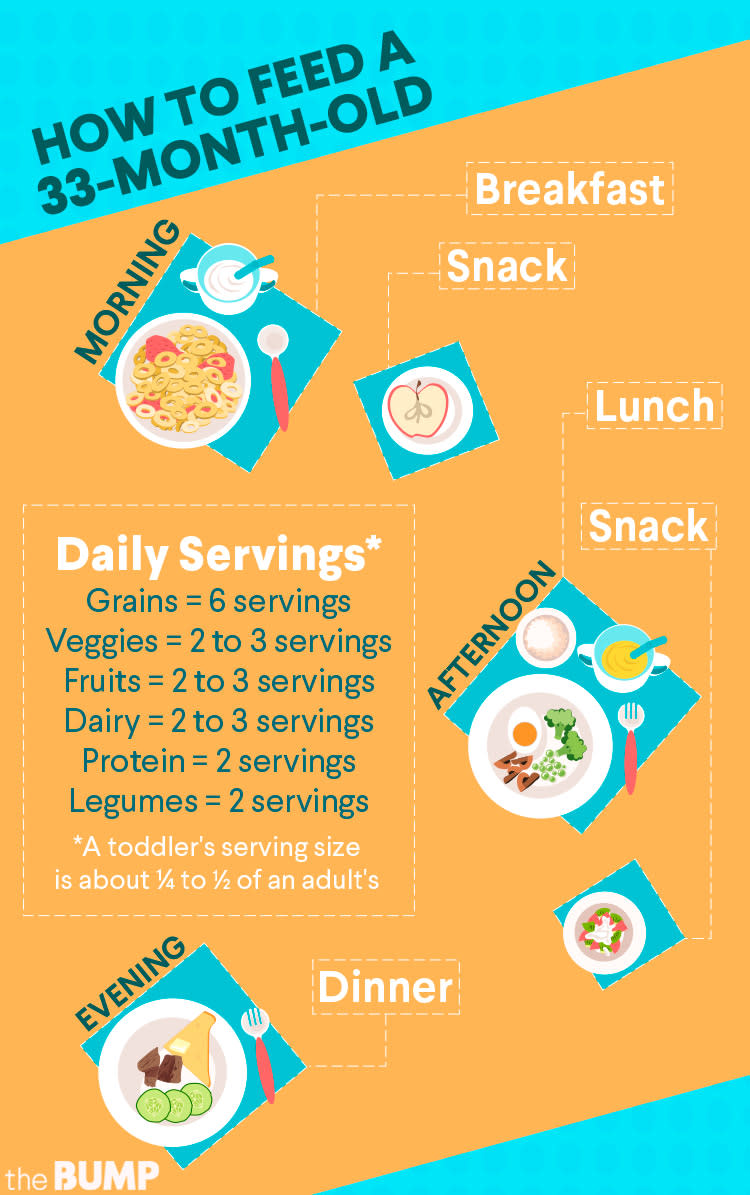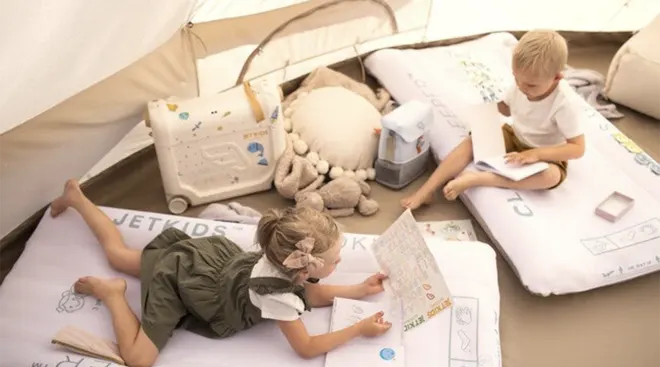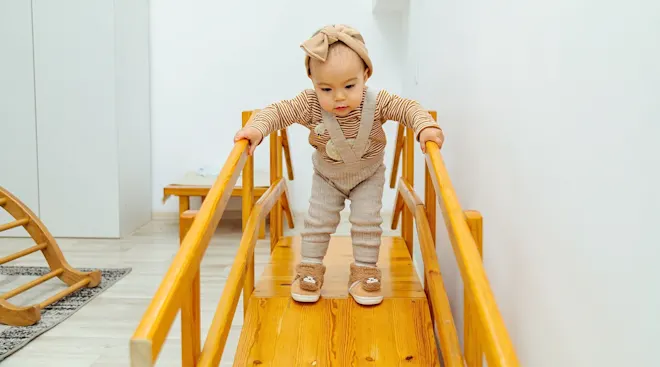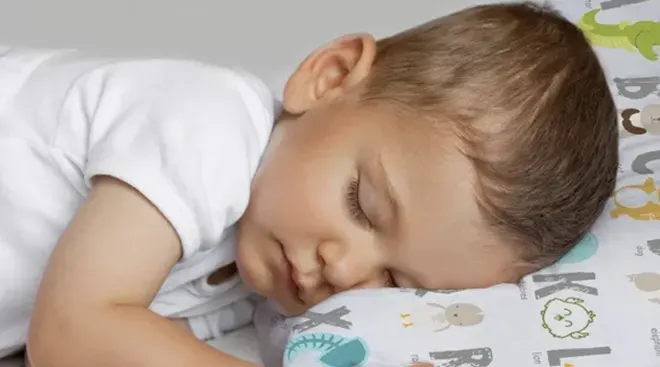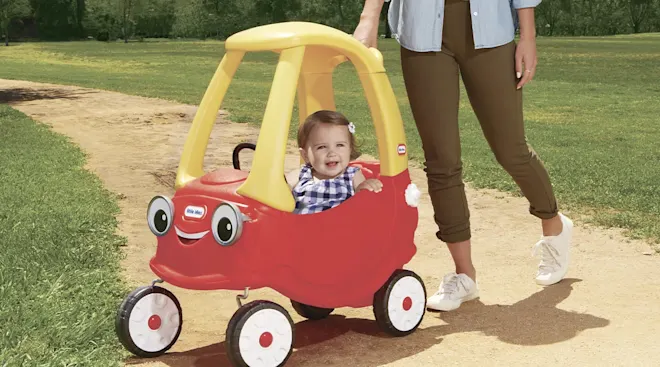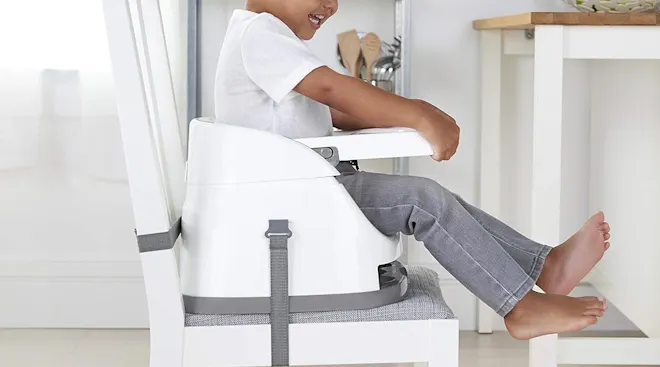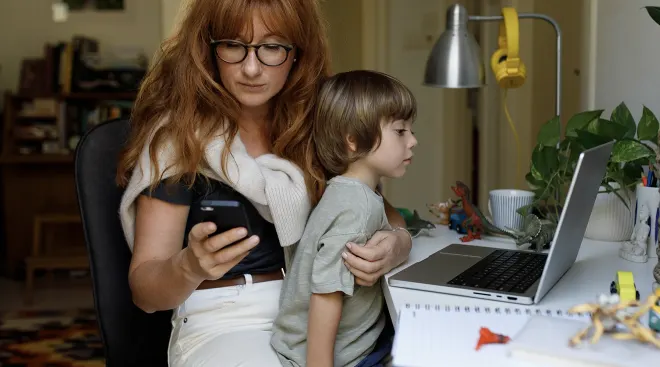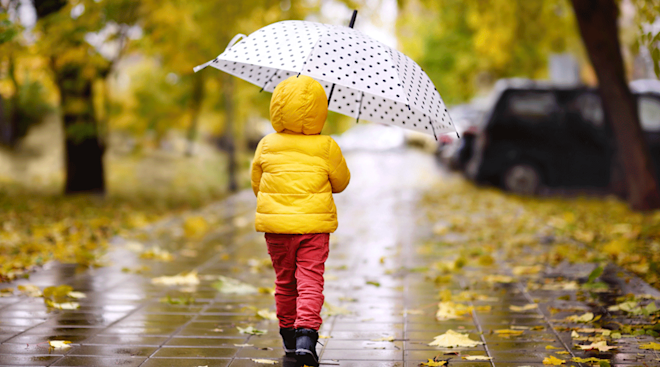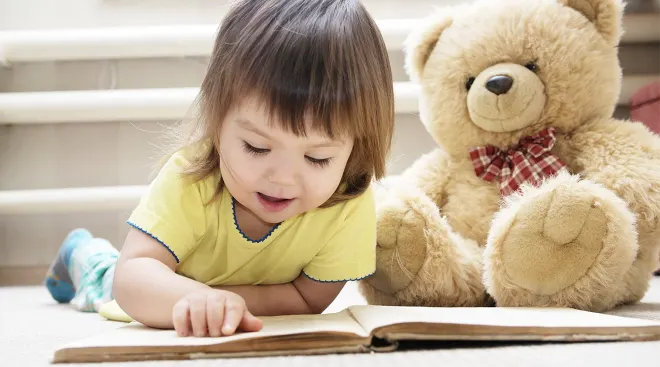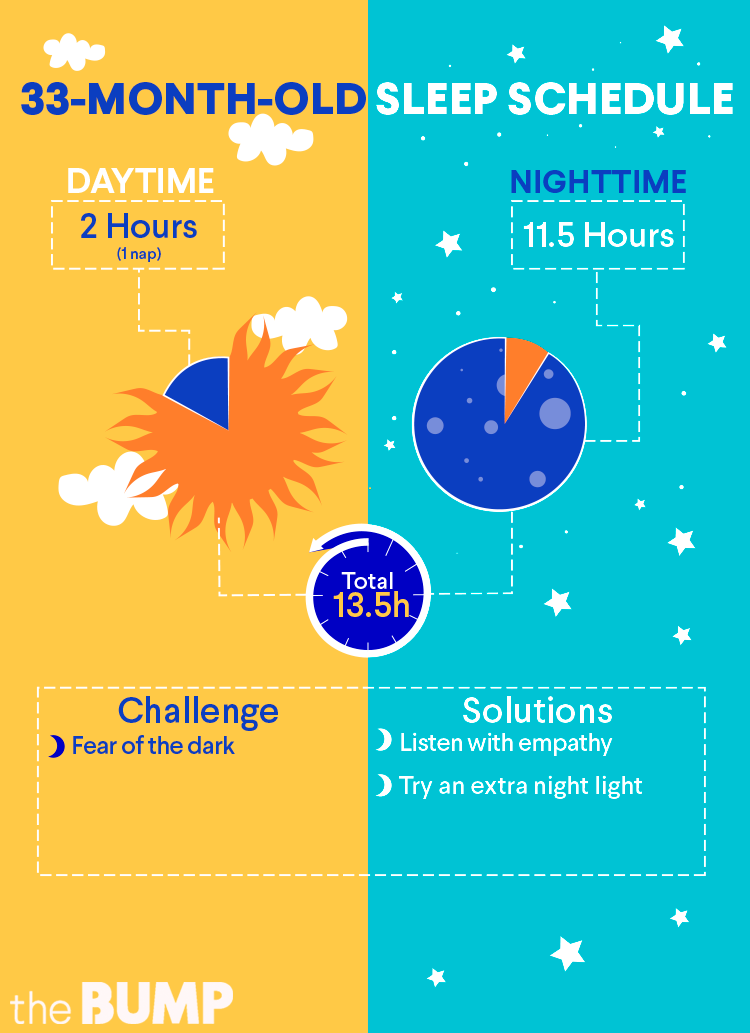Your 33-month-old baby is nearing the age of 3, and you can hardly call them a “baby” these days! They’re a walking, talking toddler who’s learning more about the world each day. There’s a good chance your child loves expressing their opinions and independence, which may mean they often don’t listen to you at this stage. Before you fret, just remember that this is all natural for a 33-month-old.
What else can you expect from your toddler at this age? Everything from imaginary friends to potty-training woes. In our guide below, we outline sleep schedules, meal inspiration and some 33-month-old milestones you can watch out for. Follow along so you feel better prepared to take on this next phase with your toddler.
As your 33-month-old grows, they’re also becoming more and more independent.
33-month-old weight and height
Average weight for a 33-month-old is around 29.7 pounds for girls and 30.8 pounds for boys. Average height is around 36.4 inches for girls and 36.8 inches for boys, according to the US Centers for Disease Control and Prevention (CDC).
33-month-old milestones
“What should my 33-month-old be doing?” you ask? There are so many exciting 33-month-old milestones to look forward to around this time. Keep an eye on the following:
- Speech. Thirty-three-month-old language development seems to happen quickly. Kids this old may know around 450 words, and by the time they turn 3 will be saying three- and four-word sentences. They also know and say their first and last name and begin to use the past tense.
- Self-care. Over the next few months, your child will probably develop the ability to undress and feed themselves.
- Teething. As your child cuts their last baby teeth—the second molars—they may experience a little pain and drooling and may wake at night or be irritable.
- Potty training. You may be in full swing of potty training. If your kid is wearing underwear but isn't 100 percent making it to the toilet just yet, going anywhere can feel stressful. Try not to plan long outings for now, and always bring along wipes and a change of clothes just in case.
33-month-old behavior
- Imaginary friends. Having an imaginary friend is not cause for concern. In fact, having a friend of their own invention helps a child make sense of the world. You can play along, but be careful not to take over your child's pretending.
- Refusing to listen. Told your 33-month-old not to do that thing? A million times? If they’re doing it anyway, they’re just displaying typical 2-year-old behavior. Make the rules and consequences clear (and age-appropriate), and follow through when your toddler breaks them. It's a long road, but eventually the rules will stick.
Health is always a top concern for parents, and this age is no different. Some common health questions parents of 33-month-olds have are:
- My 33-month-old has diarrhea. What should I do?
- My 33-month-old is constipated. What should I do?
- My 33-month-old is throwing up. What should I do?
- My 33-month old has a cough. What should I do?
- My 33-month-old has a fever. What should I do?
Your 33-month-old's appetite may go through ups and downs. Some days they’re a little vacuum and others, they barely touch their meals. That's okay, as long as the doctor says your toddler’s growth, weight gain and development are on track. Think of their overall nutrition over the course of a week, not just by the day.
How much should my 33-month-old be eating?
Thirty-three-month-olds should continue to eat three meals per day, plus two snacks. Offer your child a variety of foods in all food groups—vegetables, fruits, grains, protein and dairy—daily. Portion size isn't big at this age: Expect your kid to eat only ¼ to ½ as much as an adult.
A child over two years of age should be drinking 1 percent or skim milk (not whole milk). Try to offer low-fat dairy products too, such as yogurt and cheese. Doctors recommend kids ages one to 3 get 700 mg of calcium per day. Fat should account for less than 30 percent of your toddler's daily calories.
What to feed my 33-month-old
Looking for some tasty and nutritious meal inspiration? Check out these food ideas for a 2-year-old:
33-month-old feeding schedule
33-month-old eating problems
Picky eating can sometimes be remedied with a little creative presentation. Consider cutting sandwiches into cool shapes using a cookie cutter, making funny faces or fun scenes with vegetables, or creating fruit-and-veggie smoothies or ice pops for your child. When they look like playthings, healthy foods might seem more appealing.
Why is it that parents love to sleep but our kids, who need more of it, seem to hate it? Even if your kid resists, a good night's sleep (and a good nap) are essential for their brain and body.
How much sleep does a 33-month-old need?
Most 33-month-olds need around 11 to 12 hours of nighttime sleep, plus a nap of about 1.5 to 3 hours, for a total of about 13 to 14 hours of sleep per day.
33-month-old sleep schedule
Every kid is different, but your child's schedule may look something like this:
33-month-old sleep problems
It's common for a 33-month-old to have developed a fear of the dark. Experts advise listening to your child express their fear with empathy and then helping them feel safer. If that means an extra night light or telling them their stuffed T. rex will protect them, so be it.
As your child gets older, their play may become more imaginative, and you may notice they’re mature enough for more complex toys and activities. So what to do with a 33-month-old? Some fun activities, games and toys for a 33-month-old include:
- Counting games and songs. By 33 months, your child probably already has a basic understanding of numbers, but it’s going to take some time for them to master counting. They should be able to count to three. It’s a good idea to count everything you can together to help them build on this skill.
- Board games. Simple, introductory games like Candy Land, Chutes and Ladders and Memory are good for this age.
- Interlocking building blocks. If they haven't already, your child is probably ready to graduate from simple wooden blocks to Duplos or Mega Bloks.
- Collage making. Looking for rainy-day fun? Have your child point out their favorite photos in a few old magazines. Cut them out for your toddler and, together, glue them on paper to create a collage.
- Convincing your toddler to wear—or keep on—a pair of sunglasses may be a struggle. Instead, buy your 33-month-old a wide-brimmed hat (with a chin strap!) that's more likely to stay in place on sunny days.
- It's okay if your potty-trained child still wears a diaper or nighttime underwear to bed. Some kids learn quickly to stay dry during the night. Others take years to develop the physical readiness to recognize when they have to go during their sleep.
- By 33 months, most children have their full set of baby teeth, which means if your child hasn’t seen a dentist yet, now’s a good time to schedule an appointment. In the meantime, help your kiddo take care of their teeth. They might want to brush on their own, but your 33-month-old isn’t coordinated enough to do it right, so make sure you get a chance to scrub each tooth surface for them after they take a turn.
- Toddlers this age love to be helpful (and independent!). Encourage your 33-month-old’s independence and eagerness to help by providing chores and tasks you can do together, such as putting clothes away or picking up toys. This will also help instill the concept of responsibility.
- As frustrating as it can be, picky eating is not uncommon in 33-month-old babies. Get creative with the kinds of food you serve and make mealtime a fun and engaging activity. Doing so will make it feel more like an event and less like a chore.
- While your 33-month-old baby may not be ready to understand numbers and letters just yet, that doesn’t mean you can’t start introducing them now. Invest in some colorful letter and number magnets and place them on the fridge to help familiarize your toddler with these concepts.
- Is your toddler suffering from nightmares? Work on creating a calm and peaceful bedtime routine, and avoid introducing your kiddo to scary stories and TV shows at this age. While a few nightmares here and there are nothing too concerning, speak with your pediatrician if they become a nightly occurrence, as they could be a sign of anxiety or stress.
- You might be surprised to learn that your 33-month-old has been telling untruths. Don’t worry; your toddler won’t become a pathological liar overnight. Children at this age are simply still figuring out the differences between fact and fantasy. Encourage honesty but be sure to let your toddler have some fun with their imagination.
- Remember, toddlers need plenty of physical activity. Not only does it help them burn off pent-up energy, but it provides them with an opportunity to work on their strength, endurance, balance and coordination. Head to the playground and allow your little one to let loose.
Can you believe your 33-month-old is almost 3 years old? Time flies when you’re having fun!
Please note: The Bump and the materials and information it contains are not intended to, and do not constitute, medical or other health advice or diagnosis and should not be used as such. You should always consult with a qualified physician or health professional about your specific circumstances.
Navigate forward to interact with the calendar and select a date. Press the question mark key to get the keyboard shortcuts for changing dates.


































